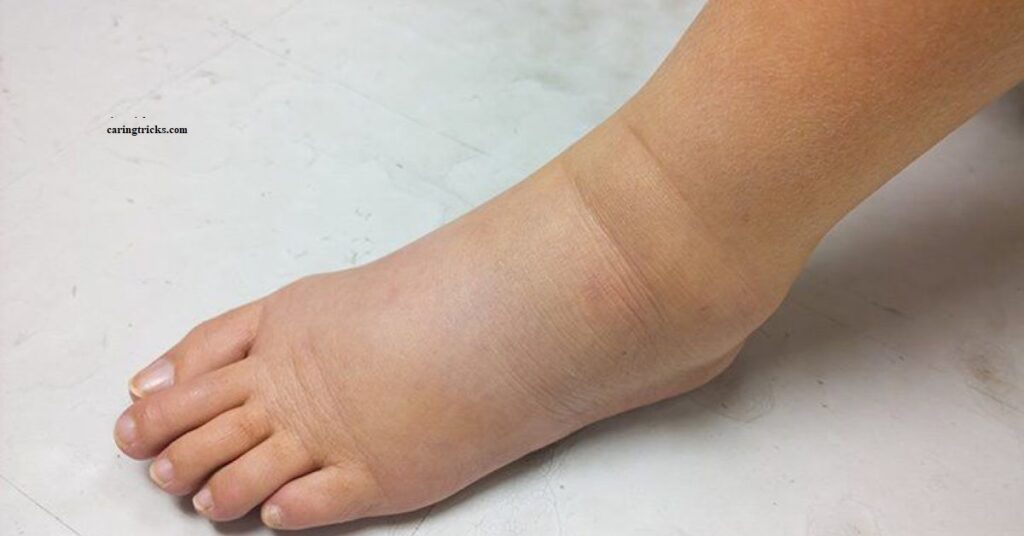Fluid Retention Uncovered: Understanding Leg Edema and Its Causes

A medical disorder called leg edema, often referred to as peripheral edema, is chacharacterized the buildup of extra fluid in the tissues of the legs, ankles, and feet. This can cause the affected area to become swollen, red, and painful, and can make it difficult to move or walk.
Causes of Leg Edema:
Causes of Leg Edema: Leg edema, or lump of the limbs, may be led to by a type of determinant. Some coarse causes contain:
Venous lack: This happens when the valves in the veins of the stages are in disrepair correctly, producing ancestry to pool in the veins and chief to lump.
Heart failure: When the heart is unable to pump blood efficiently, fluid can build up in the legs and other parts of the body, leading to edema.
Kidney disorder: The kidneys play an essential role in organizing fluid balance in the body. When they are broken correctly, fluid can increase, superior to edema.
Lymphedema: This happens when the lymphatic arrangement, that helps to away extreme fluid and waste produce from the frame, is in disrepair correctly. This can bring about a lump in the limbs.
Injuries or surgeries: Trauma to the legs or surgery can cause swelling due to the body’s inflammatory response.
Medications: Certain cures, in the way that calcium channel blockers, steroids, and nonsteroidal anti-inflammatory drugs (NSAIDs), can cause edema as a reaction.
Pregnancy: Hormonal changes and increased pressure on the veins in the pelvis during pregnancy can lead to edema in the legs.
Symptoms of Leg edema:
Some of the common symptoms of leg edema include:
Swelling: The primary symptom of leg edema is swelling in the legs, which can be mild or severe. The swelling is frequently apparent and maybe followed by pain or discomfort.
Skin changes: The skin over the swollen area may become shiny, tight, or stretched. The skin may also become discolored, and in severe cases, it may start to blister or ulcerate.
Reduced mobility: Swelling in the legs can make it difficult to move, walk, or stand for long periods of time.
Pain: The swelling can cause pain that can range from gentle to extreme. The pain may be aching, throbbing, or sharp.
Stiffness: Stiffness in the legs may also be a symptom of leg edema, making it difficult to move the legs or bend the knees.
Reduced sensation: In some cases, leg edema can cause a loss of sensation in the legs, making it difficult to feel touch or pressure.
Treatment:
leg edema can be uncomfortable and affect one’s quality of life. There are different treatment options for leg edema.
1.Lifestyle changes:
One of the first steps in considering part edema is making behavior changes.This includes maintaining a healthy weight, exercising regularly, and reducing sodium intake. These changes can help improve circulation and reduce the amount of fluid buildup in the legs.
2.Compression stockings:
Compression hoses are close-fitting dresses that request pressure to the legs, serving to increase blood flow and decrease swelling. They come in a variety of styles and sizes, including knee-high, thigh-high, and full-length. Your doctor can advise high-quality types of compression sock for you to establish the severity of your limb edema.
3.Medication:
In a few cases, cure can be essential to treat leg edema. These medications may include:
- Diuretics: These medications help the body eliminate excess fluid through the urine. They work by increasing urine output, which can help reduce swelling in the legs. Diuretics are frequently used together with additional cures, in the way that compression stockings and behavior changes.
- Blood thinners: Blood thinners can help develop distribution and decrease the risk of blood clots.
- ACE inhibitors: These medications can help reduce blood pressure and improve circulation.
- Beta blockers: These drugs can help decrease the assigned work on the heart, reconstructing circulation.
- Calcium channel blockers: These drugs can help help distribution by diminishing the blood vessels.
4.Elevation:
Elevating the legs above the heart can help develop distribution and lower swelling. This may be approved by bracing up the parts accompanying pillows or utilizing a recliner. Elevation is especially helpful after prolonged periods of sitting or standing.
5.Surgery:
In severe cases of leg edema, surgery may be necessary. This may involve removing excess fluid or repairing damaged blood vessels. Your doctor can approve high-quality methods based on the fundamental cause of your leg edema.
6.Massage:
Massage can help increase distribution and decrease swelling in the legs. It can likewise be a lessening and healing happening. Your doctor may recommend a professional massage therapist or teach you techniques to do at home.
7.Acupuncture:
Acupuncture is an established Chinese cure method that includes introducing needles into particular points on the body. It is trusted to help raise circulation and decrease swelling, which can help decrease leg edema. While research on acupuncture for leg edema is restricted, few societies find it beneficial.
8.Herbal remedies:
There are various traditional medicines that are trusted to help lower leg edema. These include horse chestnut, butcher’s broom, and dandelion. However, it is important to talk to your doctor before trying some traditional medicine, as they grant permission to communicate with additional cures or have aftereffects.
In conclusion, leg edema is an ordinary condition that may be produced by a type of determinant. While it is often a symptom of an underlying health condition, there are several treatment options available. Lifestyle changes, compression stockings, diuretics, elevation, surgery, massage, acupuncture, and herbal remedies can all be effective in reducing leg edema. It is important to talk to your doctor about the best choice analysis alternative for you to establish the fundamental cause of your limb edema. Prevention:If you are experiencing leg edema, it is important to do something to prevent it from appropriately being a chronic issue.
Prevention:
If you are experiencing leg edema, it is important to take steps to prevent it from becoming a chronic issue. In this article, we will explore some effective strategies for preventing leg edema and promoting overall leg health.
1.Stay Active:
One of the ultimate productive methods to prevent part edema is to stay energetic. Regular exercise helps to develop circulation and weaken the risk of fluid accumulation in the legs. If you have a sedentary job, make sure to take frequent breaks to stand up, stretch your legs, and walk around. Additionally, try to include formal exercise into your everyday routine, such as ambulatory, jogging, or cycling.
2.Elevate Your Legs:
Another simple way to prevent leg edema is to elevate your legs. When you sit or stand for widespread periods, fluid can grow in your lower parts on account of gravity. Elevating your legs above heart level helps to reduce this fluid buildup and promote circulation. Try to elevate your legs for 15-20 minutes several times a day, using a pillow or footstool.
3.Maintain a Healthy and good Weight:
Maintaining an athletic burden is essential for hampering part edema. Obesity can cause fluid to accumulate in the legs and increase the risk of venous insufficiency, a condition in which the veins in the legs are unable to properly pump blood back to the heart. To claim a healthful weight, devote effort to an equalized diet and common exercise.
4.Wear Compression Stockings:
Compression socks are a type of close-fitting costume that can help for fear of edema by asking pressure to the parts and advancing distribution. These stockings are available in a variety of compression levels, so talk to your doctor or a certified fitter to determine the right level of compression for your needs. Compression socks endure being used daytime, and detached every night.
5.Avoid Tight Clothing:
Tight attire can confine distribution and infuriate limb edema. To prevent this, avoid wearing tight clothing, especially around the waist and thighs. Instead, choose loose attire from breathable cloths that contain free evolution.
6.Stay Hydrated:
Staying hydrated is mainly for avoiding leg edema. When you are dehydrated, your physique can maintain fluid in a work to uphold hydration levels. To prevent this, aim to drink at least eight glasses of water per day, and limit your intake of caffeine and alcohol.
7.Reduce Salt Intake:
Salt can cause your body to retain fluid, which can exacerbate leg edema. To weaken your salt consumption, limit your use of prepared snacks and salty bites. Instead, devote effort to something fresh fruits and salads, lean protein, and whole grains.
8.Practice Good Foot Care:
Good foot care is essential for preventing leg edema. Make sure to wear affluent, auxiliary footwear that fit well and supply enough arch support. Additionally, avoid crossing your legs when sitting, as this can restrict circulation and exacerbate leg edema.
9.Treat Underlying Medical Conditions:
If you have an underlying medical condition such as heart failure or kidney disease, it is important to work with your healthcare provider to manage the condition and prevent leg edema. This can include cures, behavior changes, or different medications to advance circulation and decrease fluid development in the legs.
10.Seek Medical Attention if Necessary:
If you are experiencing severe or continuous leg edema, it is important to inquire healing consideration. Your healthcare provider can perform a medical examination and order tests to decide the fundamental cause of your leg edema.





